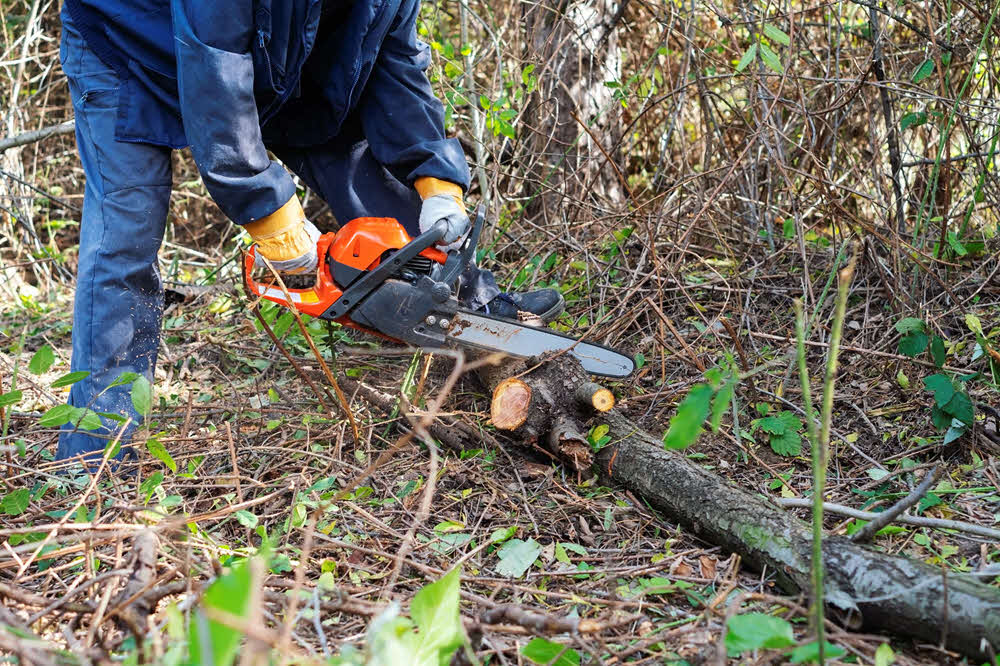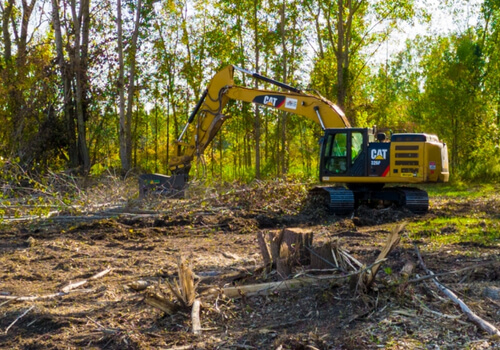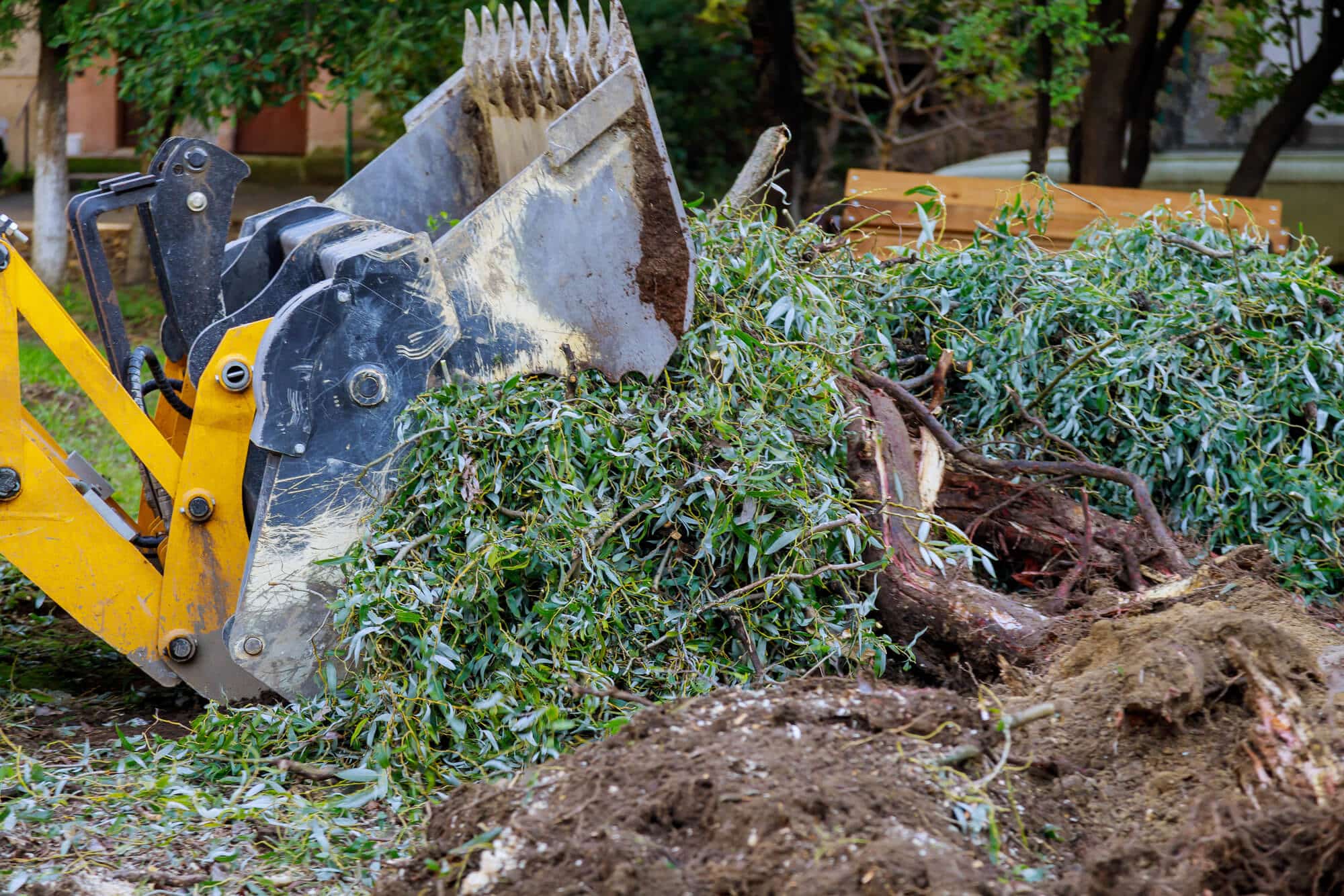Land Clearing Servicesin Troy MI
Land Clearing Expertise to Ensure a Smooth Construction Process
We Are Locally Owned & Operated For Over 37 Years
Contact Us Today!
We Serve Businesses In And Around The Following Cities:
About Land Clearing Services
Introduction to Land Clearing Services in Troy
Land clearing – a service that often goes unnoticed, but is a crucial component of the city’s infrastructure – holds considerable importance for multiple operations. In Troy, businesses, property developers, farmers, and others frequently seek the services of professional land clearing companies to prepare their land for various purposes. Whether it’s to make way for a new commercial property, cultivate a new farm, or to free up a lot for development, land clearing services are indispensable. In this comprehensive guide, we delve deep into the topic of land clearing services in Troy, including the methodology, benefits, and real-world applications.
Take for instance, the services provided by D&J Contracting – their professionalism, expertise, and thoroughness ensure that every clearing project in Troy is executed flawlessly. But why are such services important? What are the processes involved? And most importantly, how do commercial properties in Troy benefit from it? Let’s dive in to understand better.
Processes Involved in Land Clearing
When we consider land clearing services, the first step is always the same: understanding the existing lay of the land. Services like grading and land clearing help to evaluate the terrain, the density of the vegetation, and any physical obstructions which might pose issues. Once an assessment is complete, the actual process of clearing off land begins.
Depending on the density of vegetation, various types of equipment may be used, including bobcats, skid steers, and mini excavators, to name a few. For instance, bobcat land clearing or skid steer land clearing are often used to deal with smaller projects or conditions where careful maneuvering is required. However, when it comes to larger projects or heavily wooded areas, clearing land with a mini excavator often becomes the most efficient solution. Whether it be clearing bush land or heavy land clearing and leveling, the right type of machinery and skilled operators are integral to get a job well done.
Potential Benefits of Land Clearing Services
Businesses and commercial property owners in Troy who choose professional land clearing services gain numerous benefits. For starters, these services allow for a thorough and meticulous preparation of the land, clearing almost every obstruction and paving the way for smooth construction or other applications. Companies such as D&J Contracting ensure this process is smooth, efficient and safe, reinforcing the importance and benefits of such services.
Moreover, clearing land for a construction project, for instance, can significantly reduce future risks. Issues linked to unstable terrain, flooding, and pests are all minimized when the land is properly cleared and prepared. Also, land clearing services near you can considerably quicken the clearing process due to localized expertise and understanding of the land and its conditions.
Not to mention, land clearing and grading create a healthier, more conducive environment for both local fauna and plant life. By clearing away dead and damaged vegetation, land clearing contributes to the overall health of the ecosystem, making it a venture that goes beyond just commercial interests.
Real-world Applications of Land Clearing
We’ve mentioned the benefits, but how do they translate into real-world applications? Imagine you’re a business owner planning to keep horses. In this case, land clearing services become an absolute necessity to ensure the area is safe for animal habitation.
Similarly, let’s consider a different scenario: you’re planning to grade and clear a lot and build a home. Clearing and excavating the land are unquestionably integral to the process. Clearing a plot of land not just ensures your house has a stable foundation, but also reassures you there won’t be any underlying hazards that might threaten your property in the future. This is where companies such as D&J Contracting step in, providing impeccable clearing and excavating services to ensure safe, secure home-building.
Moreover, commercial applications also abound, particularly in real estate and infrastructure development sectors. Let’s say, you’re developing an office complex in Troy that requires substantial space. Here, efficient land clearing and grading operations from skilled service providers can help you get the necessary clearances and securely establish your project.
Summary and Reflection
All in all, land clearing services play a vital role in Troy’s various business and infrastructure sectors. They’re indispensable, not just from the perspective of construction and building, but also in terms of maintaining a more stable and healthy environment. From ensuring construction-ready land for builders and developers to enabling farmers and business owners to utilize their land to the fullest, the benefits of professional land clearing services remain unparalleled.
Provider such as D&J Contracting understand the nuances of what makes a land clearing operation successful. They use a wide array of tools and techniques, making sure every project is executed with precision and efficiency. No matter your need – clearing land for building a house, creating a lot, or merely clearing acres of land for commercial purposes – relying on professional land clearing services in Troy is the way to go.
If you need to unlock the potential of your property through meticulously executed land clearing services, it is recommended to liaison with experienced service providers that will ensure not just the fulfillment of your present needs, but also help guard against potential future risks associated with uncleared land.
Land Clearing Services Gallery


Call Us Today to receive your Free Quote for
Land Clearing Services in Troy
Serving: Troy, Michigan

About Troy, Michigan
The earliest recorded purchases of land in what was known as Troy Township occurred in 1819. A couple of years later, a settlement known as Troy Corners was established due to Johnson Niles buying 160 acres in the region. The area is currently the north-central area of Troy. In 1827 Troy Township was established. In 1955, Troy was officially incorporated primarily as a strategy for preventing border cities from taking more land. This also helped to establish more robust city services for Troy residents, whose numbers increased rapidly during this time due to Detroiters fleeing the city for the surrounding suburbs.
It was named after Troy, New York and the ancient city of Troy as many of the early settlers, as in much of Michigan, originated from New York.
According to the United States Census Bureau, the city has a total area of 33.64 square miles (87.13 km), of which 33.47 square miles (86.69 km) is land and 0.17 square miles (0.44 km) (0.51%) is water.
| Census | Pop. | Note | %± |
|---|---|---|---|
| 1960 | 19,402 | — | |
| 1970 | 39,419 | 103.2% | |
| 1980 | 67,102 | 70.2% | |
| 1990 | 72,884 | 8.6% | |
| 2000 | 80,959 | 11.1% | |
| 2010 | 80,980 | 0.0% | |
| 2020 | 87,294 | 7.8% | |
| 2023 (est.) | 87,339 | 0.1% | |
| U.S. Decennial Census 2018 Estimate |
|||
According to a 2018 estimate, the median income for a household in the city was $96,864, and the median income for a family was $113,640. Males had a median income of $72,005 versus $52,365 for females. The per capita income for the city was $46,664. About 5.1% of families and 7.2% of the population were below the poverty line, including 6.7% of those under age 18 and 6.1% of those age 65 or over.
As of the census of 2020, there were 87,294 people, 33,822 households, and 24,300 families living in the city. The population density was 2,609.9 inhabitants per square mile (1,007.7/km). There were 34,953 housing units at an average density of 1,044.9 inhabitants per square mile (403.4/km). The racial makeup of the city was 62.2% White, 4.0% African American, 0% Native American, 27.3% Asian, 1.2% from other races, and 5.1% from two or more races. Hispanic or Latino residents of any race were 2.2% of the population.
There were 33,822 households, of which 35.4% had children under the age of 18 living with them, 60.1% were married couples living together, 8.3% had a female householder with no husband present, 3.4% had a male householder with no wife present, and 28.2% were non-families. 23.2% of all households were made up of individuals, and 10.1% had someone living alone who was 65 years of age or older. The average household size was 2.56 and the average family size was 3.05.
The median age in the city was 43.9 years. 20.7% of residents were under the age of 18; 8.8% were between the ages of 18 and 24; 32% were from 25 to 44; 28.6% were from 45 to 64; and 19.7% were 65 years of age or older. The gender makeup of the city was 50.5% male and 49.5% female.
| Race / Ethnicity (NH = Non-Hispanic) | Pop 2000 | Pop 2010 | Pop 2020 | % 2000 | % 2010 | % 2020 |
|---|---|---|---|---|---|---|
| White alone (NH) | 65,809 | 58,869 | 53,793 | 81.29% | 72.70% | 61.62% |
| Black or African American alone (NH) | 1,678 | 3,210 | 3,422 | 2.07% | 3.96% | 3.92% |
| Native American or Alaska Native alone (NH) | 105 | 124 | 108 | 0.13% | 0.15% | 0.12% |
| Asian alone (NH) | 10,713 | 15,439 | 23,788 | 13.23% | 19.07% | 27.25% |
| Pacific Islander alone (NH) | 18 | 1 | 9 | 0.02% | 0.00% | 0.01% |
| Other race alone (NH) | 79 | 125 | 312 | 0.10% | 0.15% | 0.36% |
| Mixed race or Multiracial (NH) | 1,373 | 1,502 | 2,908 | 1.70% | 1.85% | 3.33% |
| Hispanic or Latino (any race) | 1,184 | 1,710 | 2,954 | 1.46% | 2.11% | 3.38% |
| Total | 80,959 | 80,980 | 87,294 | 100.00% | 100.00% | 100.00% |
As of the census of 2010, there were 80,980 people, 30,703 households, and 22,443 families living in the city. The population density was 2,419.5 inhabitants per square mile (934.2/km). There were 32,907 housing units at an average density of 983.2 per square mile (379.6/km). The racial makeup of the city was 74.1% White, 4.0% African American, 0.2% Native American, 19.1% Asian, 0.6% from other races, and 2.0% from two or more races. Hispanic or Latino residents of any race were 2.1% of the population.
There were 30,703 households, of which 34.7% had children under the age of 18 living with them, 62.8% were married couples living together, 7.3% had a female householder with no husband present, 3.0% had a male householder with no wife present, and 26.9% were non-families. 23.4% of all households were made up of individuals, and 9.6% had someone living alone who was 65 years of age or older. The average household size was 2.63 and the average family size was 3.14.
The median age in the city was 41.8 years. 23.8% of residents were under the age of 18; 6.7% were between the ages of 18 and 24; 24% were from 25 to 44; 31.6% were from 45 to 64; and 13.8% were 65 years of age or older. The gender makeup of the city was 49.3% male and 50.7% female.
From the census of 2000, there were 80,959 people, 30,018 households, and 21,883 families living in the city. The population density was 2,413.9 inhabitants per square mile (932.0/km). There were 30,872 housing units at an average density of 920.5 per square mile (355.4/km). The racial makeup of the city was 82.30% White, 2.09% African American, 0.15% Native American, 13.25% Asian, 0.02% Pacific Islander, 0.36% from other races, and 1.82% from two or more races. 1.46% of the population was Hispanic or Latino of any race.
There were 30,018 households, out of which 36.9% had children under the age of 18 living with them, 64.5% were married couples living together, 6.0% had a female householder with no husband present, and 27.1% were non-families. 22.8% of all households were made up of individuals, and 7.8% had someone living alone who was 65 years of age or older. The average household size was 2.69 and the average family size was 3.23.
In the city 26.2% of the population was under the age of 18, 6.7% from 18 to 24, 29.8% from 25 to 44, 27.1% from 45 to 64, and 10.2% who were 65 years of age or older. The median age was 38 years. For every 100 females, there were 98.1 males. For every 100 females age 18 and over, there were 94.8 males.
From 1990 to 2000, of all of the municipalities in Oakland, Wayne, and Macomb counties, Troy had the highest numeric growth in the Asian population. It had 4,932 Asians according to the 1990 U.S. Census and 10,730 according to the 2000 U.S. Census, an increase of 5,798. The increase gave Troy the largest Asian-American population in the tri-county area, surpassing that of Detroit.
Troy uses the council–manager form of government, and thus is governed by a city council consisting of a mayor and six council members. The current mayor is Ethan Baker, who was elected to a four-year term on November 5, 2019. The city council appoints a City Manager, who manages the day-to-day operations of the city.
The City of Troy and City of Clawson on its southern border compose Michigan’s 41st District for State Representative. The district is currently represented by Padma Kuppa in the State House since 2019, and in the state Senate by Mallory McMorrow, since 2019. The district was previously represented in the State House by Martin Howrylak since 2013, and in the state Senate by Marty Knollenberg, since 2015. On the national level, Troy was part of the 9th district, represented by Joe Knollenberg from 1993 to 2009 and Gary Peters, who defeated Knollenberg in a highly publicized race in November 2008. Nationally, Troy is part of the 11th district, held by Democrat Haley Stevens.
Troy is the location of Walsh College, a business school, as well as branches of the University of Phoenix, Northwood University, Central Michigan University, Spring Arbor University, International Academy of Design and Technology, and Michigan State University.
There are seven school districts serving Troy; however, Troy School District serves the majority of the city limits. The district has multiple elementary schools, four middle schools, and two zoned high schools: Troy High School and Athens High School.
Three school districts have sizable portions of territory in Troy and operate at least one elementary school within the city: Avondale School District, in the north and northwestmost portion of the city; Birmingham City School District, in the southwestmost portion; and Warren Consolidated Schools, in the southeast, which operates Susick Elementary within the city. In addition, two other school districts are located in part in Troy but have no schools within the city limits: Bloomfield Hills School District, with a portion of the northwest part of the city, and Royal Oak School District, which has a very small portion of the southern part of the city. Finally, a small area of commercial property also in the south lies within the borders of Lamphere Public Schools
The Troy School District also hosts the eastern campus of the International Academy. Private schools include Bethany Christian School, Brookfield Academy, Oakland Children’s Academy, St. Mark Christian Academy and Troy Adventist Academy.
Call Us Today to receive your Free Quote for
Land Clearing Services in Troy
Related Services in Troy, Michigan
We Serve Businesses In The Following Zip Codes:
48007, 48015, 48021, 48026, 48035, 48036, 48038, 48042, 48043, 48044, 48045, 48046, 48047, 48048, 48050, 48051, 48066, 48071, 48080, 48081, 48082, 48083, 48084, 48085, 48088, 48089, 48090, 48091, 48092, 48093, 48098, 48099, 48225, 48230, 48236, 48310, 48311, 48312, 48313, 48314, 48315, 48316, 48317, 48318, 48397